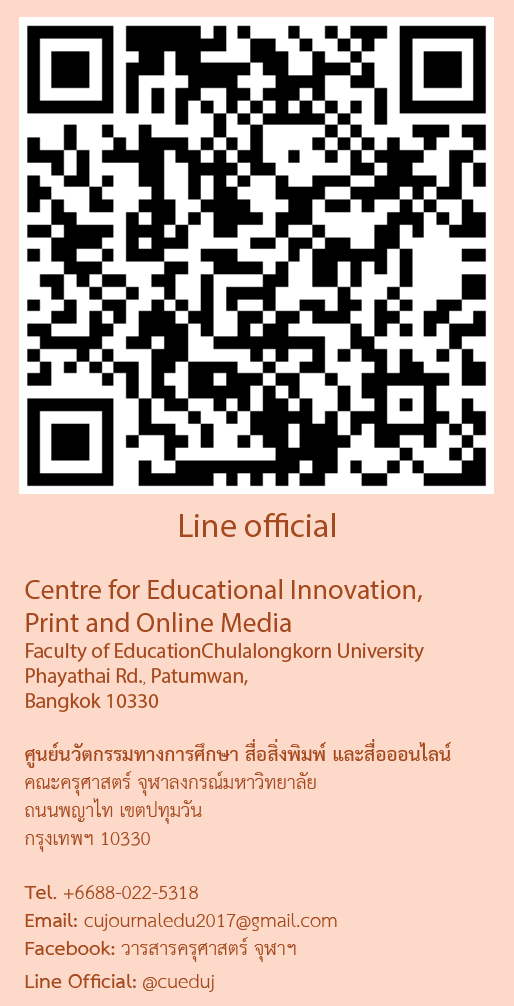Abstract
The objectives of this quantitative phenomenology study were: (1) to synthesize literature relevant to an open instructional design to enhance creative problem solving ability; (2) to study veterans’ experience-based opinions towards the open instructional design model; and (3) to apply the open instructional design as the guideline. The research included sample 10 veterans with 15 years of instruction experience in scholarly or professor positions, two of which specialized in five academic fields. The applied research tools included three in-depth interview sections, namely (1) inquiries about general information of the respondents, (2) opinion towards open instruction, and (3) opinion towards concepts and theories applied with the research. The data were collected by in-depth interviews and analyzed with a content analysis method using the ATLAS. ti program. The research findings were as follows: The video-based open instructional design model to enhance creative problem solving ability consisted of four components, including (1) instructional design, (2) open instruction, (3) group process, and (4) video-based learning. Each component was related with one another in which the design was proposed as having (1) open learning, (2) open instruction, (3) evaluation, and (4) instruction media
Publisher
Faculty of Education, Chulalongkorn University
DOI
10.58837/CHULA.EDUCU.47.1.7
First Page
123
Last Page
143
Recommended Citation
Nonthamand, Narin and Na-Songkhla, Jaitip
(2019)
"Guideline to Develop an Instructional Design Models Using Video-Based Open Learning: Quantitative Phenomenology Study,"
Journal of Education Studies: Vol. 47:
Iss.
1, Article 7.
DOI: 10.58837/CHULA.EDUCU.47.1.7
Available at:
https://digital.car.chula.ac.th/educujournal/vol47/iss1/7


